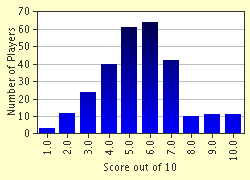Quiz Answer Key and Fun Facts
1. The word "viking" is based upon the word "vik," meaning a creek, inlet or bay. From which language does the word "vik" originate?
2. Which of the following was not a musical instrument played by Viking musicians:
3. Many people know that the Vikings used short, straight lines to form the carved writing known as runes, but what did they call their alphabet?
4. Swedish Vikings tended to travel toward the east while exploring and raiding, and in 839 AD they reached the Byzantine capital of Constantinople. The Byzantine emperors were impressed with their skill as warriors, and consequently used Vikings as their personal guards. What name was given to these special bodyguards?
5. The Vikings had many games, for their leisure time between raids. Which of these was the most common board game?
6. Riddling was also a very popular game among the Vikings; a warrior needed his word skill to be as good as his sword skill. What is the answer to this popular Saxon riddle: "On the way a miracle: water become bone"?
7. Erik the Red discovered and explored a mysterious western land between 982 and 985 AD. Why did he name this new land "Greenland"?
8. The Vikings believed that certain objects used by their gods could also bring luck to man when worn. What was the favorite good-luck charm of the Vikings?
9. Which of these words, which we use in English today, was not borrowed from the Vikings?
10. The North American Viking site in Newfoundland is known as "L'anse aux Meadows". However, this is an English mispronunciation of the original French. What was the original name given to the area by later settlers?
Source: Author
jgiles
This quiz was reviewed by FunTrivia editor
bloomsby before going online.
Any errors found in FunTrivia content are routinely corrected through our feedback system.
